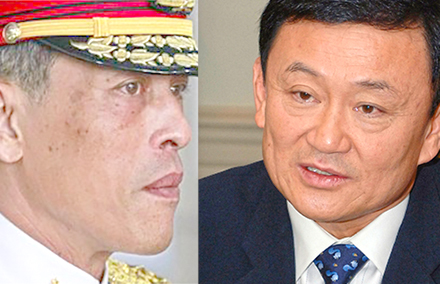
Christine Gray looks at the role Thaksin Shinawatra and the Crown Prince have had in shaking up the country’s old politics and old elites.
Currently I am re-reading Andrew MacGregor Marshall’s тАЛA Kingdom in Crisis along with other works on the Thaksin era of 2001 to 2006, comparing it to Thak ChaloemtiaranaтАЛ’s classic Thailand: The Politics of Despotic Paternalism. As I do I can’t help thinking of the 1933 Boworadet Revolt.
The revolt was a clumsy attempt by the disaffected and ambitious Prince Boworadet, former Minister of War, to restore the so-called “absolute monarchy.” Its failure had a cataclysmic effect on Thai politics, requiring decades of equivocation by the artful courtiers of the Ninth Reign, necessitating yet additional kinks and odd absences in the writing of official (royal) history.
Boworadet, as was traditional, launched his forces from the periphery, from Korat in the Northeast, and also Ayutthaya in the near north, attempting an encircling movement around the capital. When he fled, it was by plane to French Indo-China, leaving his followers behind to face the wrath of the revolutionary government. The defeat of a prince of the blood by a commoner (in a minor skirmish) commenced the meteoric rise to power of artillery officer Phibun Songkhram, leader of the junior army faction of the Promoters of the 1932 Revolution.
If 1933 and military coups from 1947 onward show, it was that the military clique that holds Bangkok, the celestial capital, also holds the kingdom, the “radial polity.”
Former Prime Minister Thaksin Shinawatra played the board differently, using cash and modern communications technology to draw power from the wronged periphery. This included Isan, the northeast, many of whose citizens constitute the working classes (pedi-cab drivers, sex workers and so on), and the north, which was traditionally ambivalent about Bangkok rule.
Thaksin thus drew energy from forces on the periphery — isolated, contained and oppressed with varying degrees of success by the central government since the 1901-1902 Holy Man (phu mi bun) uprisings. He also put a monkey wrench into the “network monarchy” of which Duncan McCargo speaks, scaring and uniting Yellow Shirt monarchist forces that Eugénie Mérieau refers to as the Deep State of conservative royalist-juridical-military interests, operating through channels both bureaucratic and extra-bureaucratic.
Now, technically, there can be a unified revolt from the periphery, assuming that millions of dollars can be poured into peripheral politics and that a wealthy, ambitious and charismatic figure like Thaksin prizes power or even patriotism over his own personal safety.
The Deep State knows this, hence ridiculous new contortions regarding social media in the lese majeste wars.
Contra those who insist that royalty and royals are peripheral to the process, the Crown Prince is the Wild Card, letting Yellow Shirt/PAD interests act as de facto support while playing the Red Shirts and new Sino-Thai wealth. A cycling enthusiast as unifying force, a philanderer as promoter of family values.
Thailand, like the United States, has entered a new era, with new communication styles and a new politics busting out. New political and cultural dynamics have stunned the old guard of both parties in the US, inducing a sense of astonishment and disbelief; reality TV is, after all, not real.
In Thailand, the new politics are underscored by passive, go-along, consumerist urban youth, come of age as directed in the Ninth Reign. Tapping into new wealth, new social media, and bottled rage and resentment at centuries of maltreatment from the royal capital in Bangkok, forces from the periphery can, for the first time, dominate the capital, the worst nightmare of the Chakri Dynasty and its hangers-on.
Thaksin would seem to be like Donald Trump (or is that Drumpf?) — a wrecking ball to the status quo. The Crown Prince always has been.
Christine Gray is a cultural anthropologist who writes about the Thai monarchy.
 Facebook
Facebook  Twitter
Twitter  Soundcloud
Soundcloud  Youtube
Youtube  Rss
Rss 